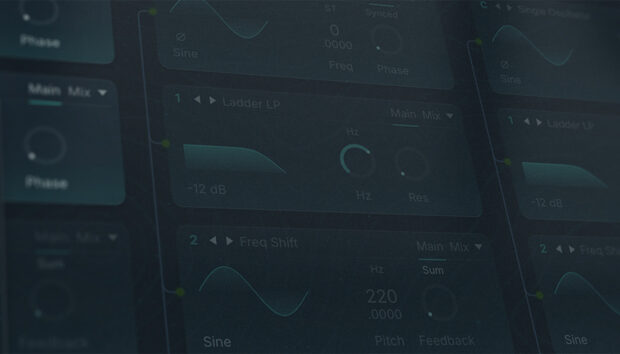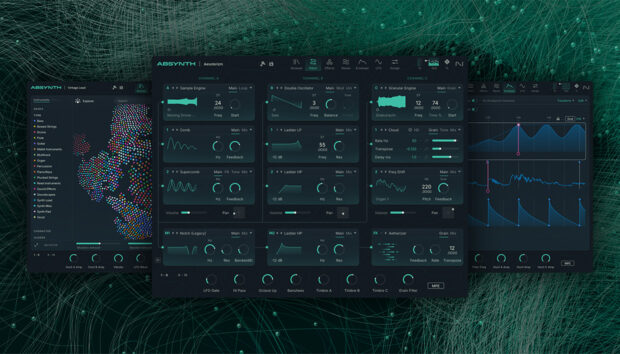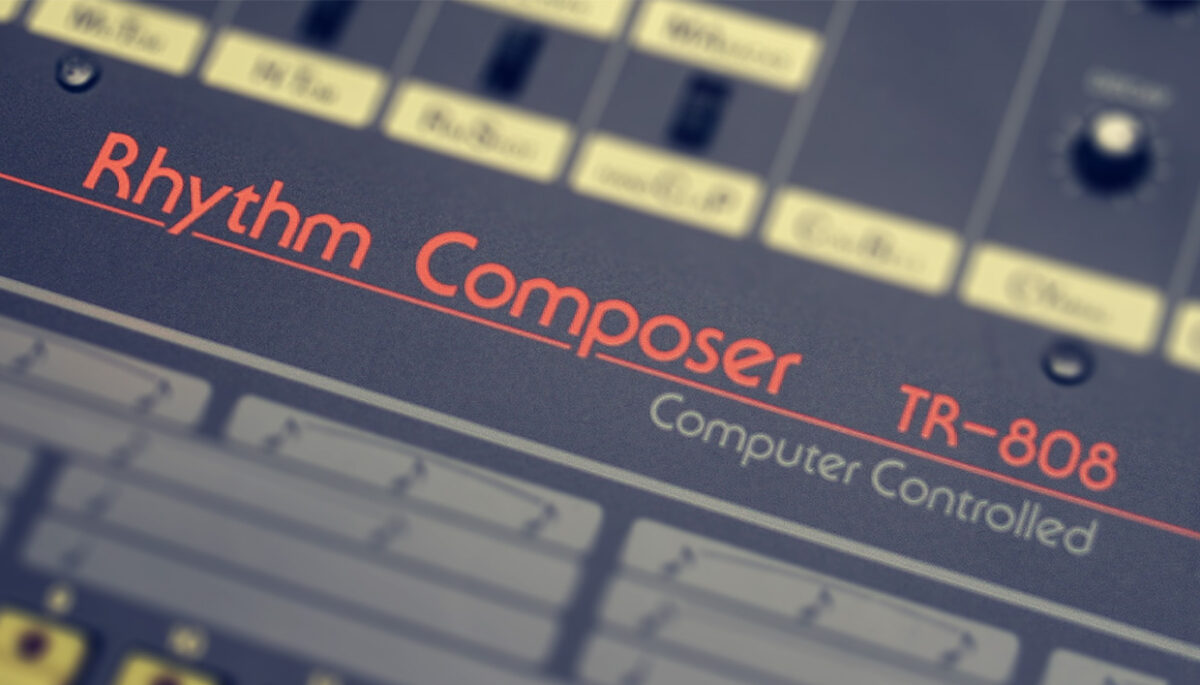
In the realm of music production, few elements are as iconic and game-changing as the legendary 808 beats. These beats have transcended genres and generations, leaving an indelible mark on the musical landscape.
We’ll explore the origins, evolution, and undeniable influence of the 808 in beat making, uncovering their role in shaping the sonic identity of countless tracks and igniting dance floors around the world. This includes the most iconic drum machine of all time and the beats that come from it.
Jump to these sections:
Follow along with this tutorial using Battery 4, the cutting-edge drum sampler and the worldwide studio choice for creative beat production.
There are a handful of drum machines that rank as all-time classics, but there is only one which towers over all others—the Roland TR-808. While it might have the benefit of the prestige accrued from being one of the earliest fully-programmable drum machines ever made, the TR-808 is still in wide use today, and still influences production sounds in many genres today.
The Roland Transistor Rhythm 808, known by its shortened name “808” has been at the heart of so many genres, and used in so many ways, that it has become synonymous with many sounds. Let’s look at how 808 beats and sounds are elemental to a few genres. We’ll see how to use 808-type sounds to emulate the beats that have made the machine so famous.
What are 808 beats?
All drum machines are capable of making nearly every kind of beat—but certain machines are best suited to certain styles or genres. This is an advantage that the TR-808 has over many others—it was the favorite drum machine of many artists who invented the genres we love today. Hip hop, techno, electro, house and all of its variations and subgenres grow from the early 80s, when the 808 was first available. These sounds planted the seeds for future genres like trap, ghettotech, dubstep, electroclash, minimal and more which rely heavily on 808 type sounds and the original machine itself.
Roland sold the TR-808 from 1980 to 1983. The main competing drum machine at the time featured samples of acoustic drums, whereas the TR-808 used transistor chips to make synthesized sounds. The sounds made by the 808 were far more electronic and unlike anything else available, giving a futuristic and otherworldly sound.
The TR-808 was instantly adopted by major musicians who recorded massive hits with the machine. Greats like Marvin Gay and even accomplished drummer Phil Collins recorded one of his greatest ever drum parts over an 808.
The 808 featured prominently in early hip hop records, including Afrika Bambaataa & Soulsonic Force’s Planet Rock, and T-La Rock and DJ Jazzy Jay’s “It’s Yours”—produced by Rick Rubin as the first release on the seminal Def Jam label.
Emulations of these sounds have launched careers and spawned entire genres. Not convinced? Listen to this Beastie Boys track, and note the similarity to both the early T-La Rock record, and how the slow, low rumble of the 808 bass resembles today’s trap beats.
While Cybotron’s “Clear” has been a staple of hip hop dance floors, even having been sampled by Missy Elliott, it’s also widely considered to be the first ever Detroit Techno track, and simultaneously launched the electro genre.
There’s also no doubt the 808 has made its way into modern trap and hip hop. The sounds of the original TR-808 lay in the bedrock of trap beats, from the stuttering 32nd-note hi-hats to the massive bass notes that are colloquially called “808s” because they resemble samples from the 808 bass drum.
The 808’s sound is so iconic because of the unique levels of bass it can produce. It has been known as “the bass queen”—because samples of the bass drum became used for bass lines, which then led to the term “808” being used to describe any low, smooth bass line.
How to make 808 beats
We’ve shown some great 808 beat examples that are at the heart of so much modern music, so let’s look into how to make 808 beats. We’ll break down the beats typical of two genres we’ve explored above—electro and trap. These are two genres that we’ve shown are truly grounded in 808 sounds, and we’ll show you how to write these beats, and how small tweaks to these sounds can make your productions sound even fresher while keeping the classic foundations in place. We can make fantastic 808-style kits in Battery 4, and we’ll show you how to use this kit to make the same beats as classic 808s.
Electro 808 beats
Let’s start with an electro beat. One of the essential elements to an electro beat is that the 808 sounds are syncopated. That means that the beats have accents or hits in places that are not always evenly spaced. Electro beats combine the anchor of claps or snares on the 2nd and 4th beats of a measure, but the kick drum might appear in varying places in a measure.
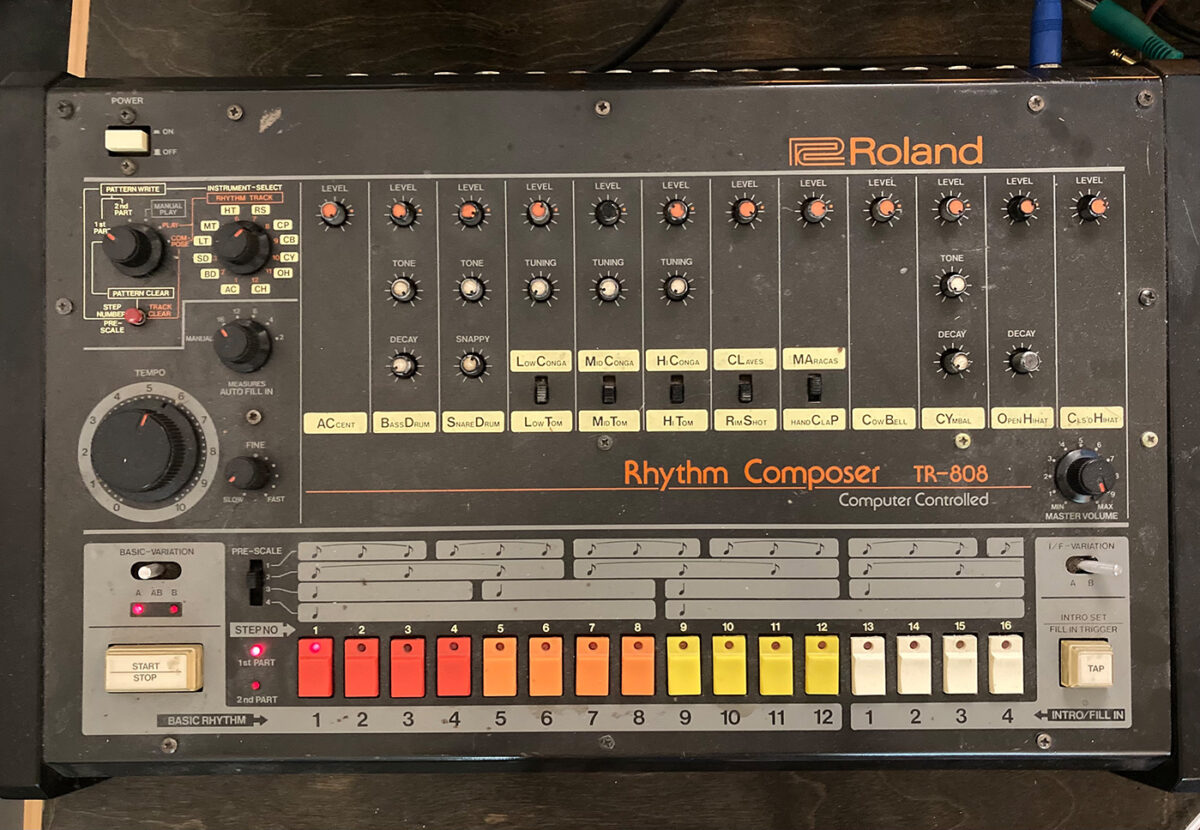
Here’s an example of the foundation of an electro pattern created on a real Roland TR-808. We’ve got a kick on the first beat of the bar, and then snare hits on the 2nd and 4th beats of the measure.

To add some syncopation, we’ll put kick drum hits in a few different places, and we’ll add some hi-hats to move the accent of the rhythm around.
Here are the MIDI notes we chose

And here’s how it sounds.
We can use very similar sounds by building an 808-style kit in Battery 4. By using the similar sounds and the same MIDI notes, we can recreate the beat using our Battery 4 kit, and see how that sounds.
Here’s how the 808-style kit looks in Battery 4.
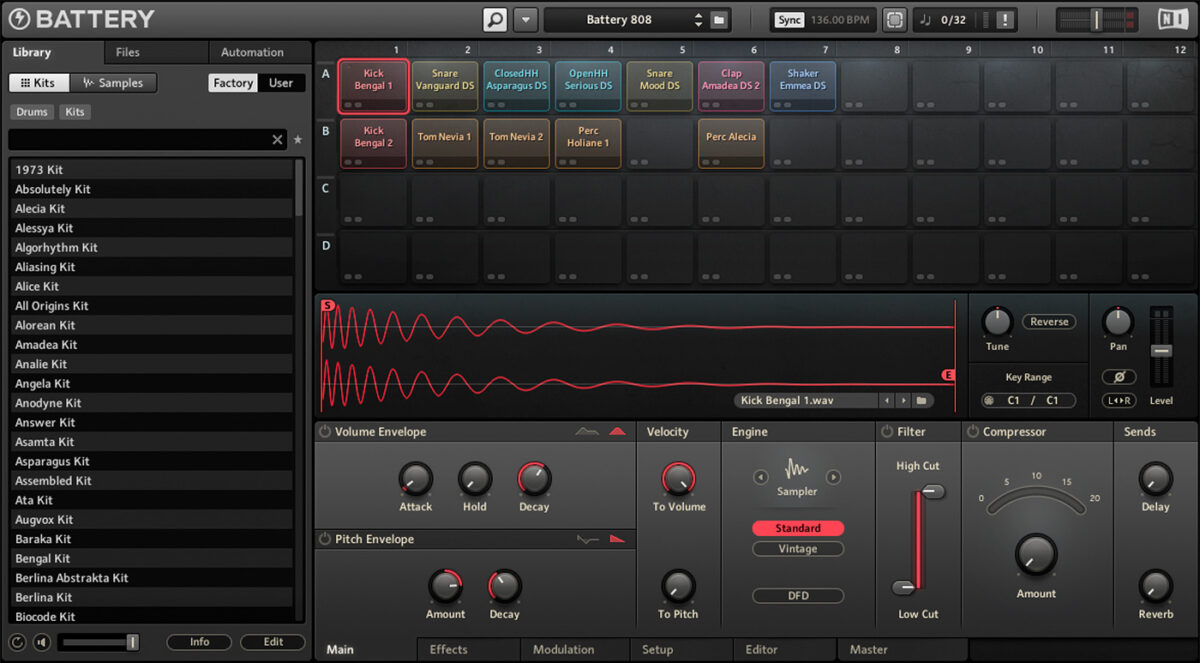
And here’s how it sounds.
Trap 808 beats
Let’s do a similar process by setting up the anchor points of our beat. Just the kick and the snare. The kick will be slightly different in this, because we just want the initial hit of the kick. The bass will be provided later.
Here’s how the MIDI notes look for that.

And here’s how it sounds.
Now we’ll add some accents to this beat, and the hi-hats will make it much more clearly a trap beat.

And now let’s hear how that sounds with our kit from Battery 4:
Now to make this a real, full-fledged trap beat we need the bass, aka “the 808.” As we said before, the origin of calling a bass line an “808” comes from the days when a sample of the original TR-808 bass drum was used to make bass notes. But now with fantastic digital synths like Massive, we can develop more control and nuance to our bass.
To make the bass line, we’re going to use Massive X—which is an incredibly versatile synth for lots of sounds. We are using this patch called “Bump” which is in the Platinum Bounce Expansion pack. It has the same low tone as a sampled 808 kick.
This is the patch in Massive X that we’ll be using.
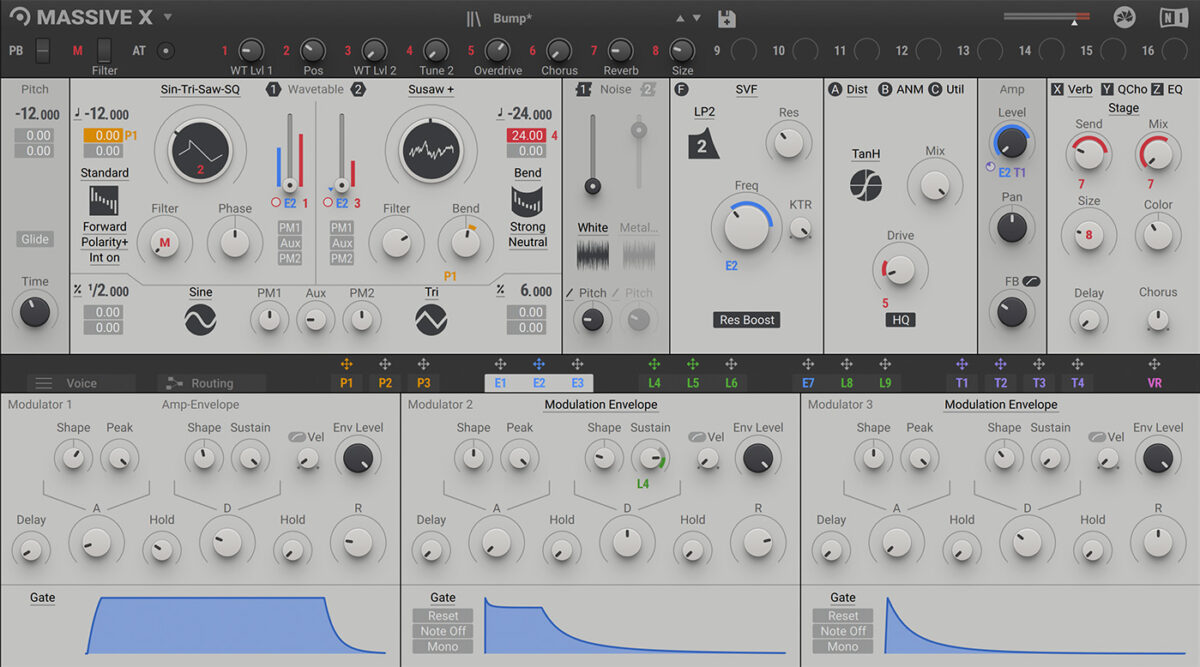
Here’s how the patch sounds alone.
And here’s how it sounds with the real 808.
Here’s the Massive X patch with our Battery 4 kit.
And that’s it! There’s two powerful 808 beats in different genres that you can now follow along with to create your own beats.
Start making 808 beats
As you can see, there are a lot of ways to use 808 sounds in your beats, and ways to capture the classic 808 sound with samples and plugins that are easy to use like Battery 4 and Massive X. You can start using these sounds to add more energy and timeless quality to your tracks now.












